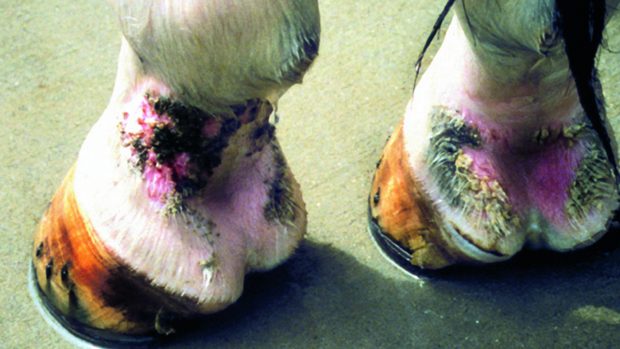With sodden conditions across most of the country, vets are reporting a high incidence of mud fever this winter.
“There have certainly been more cases than normal,” British Equine Veterinary Association (BEVA) president Keith Chandler told H&H. “Especially in the south-west and Gloucestershire.”
Mud fever — or pastern dermatitis — can range from a mild skin irritation to painful skin sores with underlying infection.
It can easily turn a crease in the skin into a deep crack, particularly at the back of the pastern.
Bacterial infection can enter through the damaged skin, resulting in a hot, swollen and painful leg, which can produce severe lameness.
It is generally less prevalent in warmer weather, but horse owners are reporting that, due to the soggy summer, symptoms never really went away.
“We saw a lot of mud fever very early this year,” said yard manager Sue May from Gloucestershire. “Nearly every horse on the yard had it.”
H&H veterinary adviser Karen Coumbe added: “Typically in Britain, these cold, wet, muddy conditions in winter cause mud fever, but this year a wet summer is to blame too.
“Barrier creams are sometimes recommended, but these can seal in moisture and create an environment where the damaging bacteria thrive. Overall it is important to keep the skin as clean and dry as is possible.”
Mr Chandler added: “Mud fever is not a painful condition. So if you touch a scab and the horse is in pain, it’s worth a call to your vet.”
This news story was first published in the current issue of H&H (6 December 2012)





